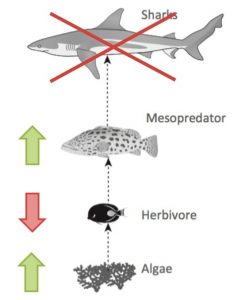I attended the “Environmental Activism and Solution” panel discussion this afternoon hosted by the CofC Office of Sustainability. This seminar was a perfect topic for my fourth blog post—and a good recap to my semester in an Environmental and Sustainability class—because we discussed the causes and effects of climate change and what can be done to inspire people on the local, state, national, and international levels. The two panelists were clear advocates of local legislation, and the multifaceted impacts it can have on climate change and other environmental issues. To begin the discussion, they compared the debate on climate change to a dangerous rafting trip; as the boat inches nearer to a deadly waterfall, the passengers begin to argue on what to do, and eventually run short on time. This illustrates how rapidly our problems are growing, and how these environmental issues should be met with intensity and urgency.
The discussion was extremely interesting to me because they mentioned much of what I have learned throughout the semester. They explained two extreme climate scenarios the Intergovernmental Panel have predicted could happen: A2 and B1. A2 is the negative extreme, where there would be a doubled and displaced population, little technological advance, drought, starvation, and a temperature and sea level rise. B1, on the other hand, indicates a stabilization of population, rapid growth in technology, and a gradual, maintainable temperature and sea level rise. The solution to A2, and the way to achieve B1 on a local level, is through continued political engagement and the monitoring of our own lifestyles. The panelists suggested participating in habits such as “Meatless
Mondays”, using a small amount of plastics, and taking public transportation. From this, they explained the polycentric society we live in that has multiple centers of power and decision-making, and how incentives are different from local level to state level to national level and beyond. Specifically, in the coastal city of Charleston, we look at concerns such as whether or not we should make sea walls, or keep rebuilding Folly Beach, or if we should move inland. However, these are not the main concerns at the state or national level; they are more focused on things such as laws, taxes, imports, and exports. This led them to their next point of interest in the discussion that was about adaption vs. mitigation. Adaption, as we learned in class, is the process of adjustment to actual or expected climate and its effects, and mitigation is technological change and substitution that reduces the cause of an effect, such as implementing policies to reduce greenhouse gas emissions. Their debate was that mitigation should be happening on the national level, while adaption is happening on the local level.
This seminar was a very interesting experience because we had a conversation with the panelists. We were able to ask questions, listen to their answers, and respond in ways we felt were appropriate. Although a lot of what was discussed I had heard in class, they also presented statistics and definitions I had never seen before. I would strongly recommend attending one of the Sustainability Week events in the upcoming few days.
Notes from the discussion:
* Takes government action on state, national, international level
* State has not allowed local action on a lot of climate change issues
* Compared to rafting toward deadly rapid; wasted time on arguing about what to do (ex. speed of current, amount of rainfall)
* Intergovernmental panel have been working on climate models and scenarios to predict climate change
* Two scenarios panel came up with:
o A2: population keeps increasing until it doubles, new technology is slow, 5 degree F increase and great sea rise, drought and starvation, refugees from flooding (displaced populations)
o B1: stabilization of population, rapid growth in technology, temperature and sea level rises gradually
o We need to reduce rate of carbon emissions by 2/3
o This is why it is a political science problem
* US is 2nd largest emitter in the world; we import from China which is the 1st larger
* US needs to take leadership in this because we have the power and should serve as an example for the rest of the world
* Paris Accords—green climate: fund 3 billion dollars toward reducing greenhouse emissions ($10 per person)
* Problem should be met with urgency
* CofC by 2030, 0 waste: large percentage of waste doesn’t go to landfills
* Dining halls compost
* Importance of knowing where your garbage goes
* Landfills generate a lot of methane (potent greenhouse gas)—keeping food out of landfills is a great contributor to reducing greenhouse gas
* Continue to reach out to your elected representatives
* Looking at our own lifestyles: “Meatless Mondays”, reduce personal consumption of plastics, take public transportation
* Political engagement and own life style engagement
* Citizens climate law: tax on carbon content of fossil fuels (carbon tax)
* Climate policy in terms of mitigation and adaptation
* As a coastal town, should we make sea walls, keep rebuilding Folly Beach, should we move inland? – different than state level, national level, international level
* Polycentric: multiple centers of power/decision making, what are the incentives of local level vs. state level vs. national
* Local=adaptation and national=mitigation
* 3rd world countries can’t afford adaptation (is adaptation going to happen on a global stage)
* We have the responsibility as affluent section of the world to take care of others needs
* Climate change goes across many domains; a public health issue also
* Solutions that are broad based, more about innovation
* This Changes Everything book
– Allyson Peurifoy



